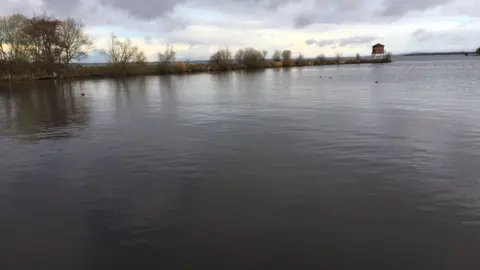Lough Neagh: Blue-green algae at 'level not seen since the 1970s'
 PA Media
PA MediaPotentially harmful blue-green algae have appeared on Lough Neagh at a level not seen since the 1970s, monitoring scientists have said.
Algal blooms can produce toxins and remove oxygen from the water as they decompose.
The Agri-Food and Biosciences Institute (AFBI) said surface temperature readings were higher than usual for the time of year, with 21C detected.
The June average in recent years has been 15C.
AFBI said the conditions could pose a risk to fish and the lough ecosystem, but added that the oxygen levels it has measured remain consistent with those required for fish "to grow and thrive".
It added that there have been no reports of any fish kills so far this year.
New equipment has been brought in to provide real-time data on water temperature and dissolved oxygen levels.
The algal bloom has been caused by the recent spell of warm, settled weather coupled with unusual levels of water clarity.

The clearer waters are likely due to zebra mussels, an invasive non-native species, first seen in Lough Neagh in 2005.
They filter particles from the water, allowing light to penetrate further into the depths which encourages nuisance plant and algal growth.
The lough is home to significant native species like eel, trout and pollan.
Sonar surveys have confirmed that most fish are remaining in their normal habitat near the bottom of the lough for now.
